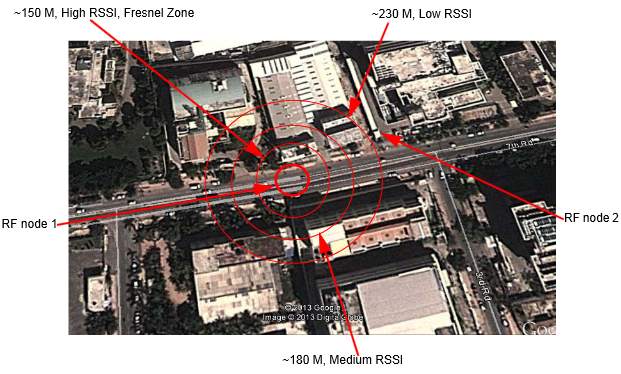Application Note AN1629
October 2013
Pradeep Shamanna
The increased popularity of short range wireless in home, building and industrial applications with 2.4 GHz band requires the system designers to understand the methods, estimation, cost and trade-off in short range wireless communication. Apart from considering the range estimation formula, it is good to understand the wireless channel and propagation environment involved with 2.4 GHz. Generally, RF/wireless engineers perform a link budget while starting an RF design. The link budget considers range, transmit power, receiver sensitivity, antenna gains, frequency, reliability, propagation medium (which includes the principles of physics linked to reflection, diffraction and scattering of electromagnetic waves), and environment factors to accurately calculate the performance of a 2.4 GHz RF radio link.
Usually, 2.4 GHz channels are part of unlicensed Industrial Scientific Medical (ISM) frequency bands. Many protocols such as ZigBee® (IEEE 802.15.4), Bluetooth® (IEEE 802.15.1), Wi-Fi® (IEEE 802.11 b/g/ n), Wireless Universal Serial Bus (WUSB), proprietary protocols (MiWiTM) and few cordless phones occupy this space. However, operation in the 2.4 GHz ISM band induces the radios to interfere with other protocols utilizing the same spectrum. This application note describes a simple link budget analysis, measurement and techniques to evaluate the range and performance of wireless transmission with results and uses developed models to estimate the path loss for short range Microchip MRF24J40 2.4 GHz modules both for indoor and outdoor environment. Hence, an attempt is made to provide designers with an initial estimate on wireless communication system's performance. The performance parameters include range, path loss, receiver sensitivity and Bit Error Rate (BER)/Packet Error (PER) parameters which are critical in any communication.
Microchip’s MRF24J40MA, MRF24J40MB and MRF24J40MC are the three modules which have varied specifications relating to power and type of antenna. These modules are considered for measurement purpose in this application note.
![]() Download Application Note AN1629 (2.5 Mb)
Download Application Note AN1629 (2.5 Mb)

Location and distance for urban environment